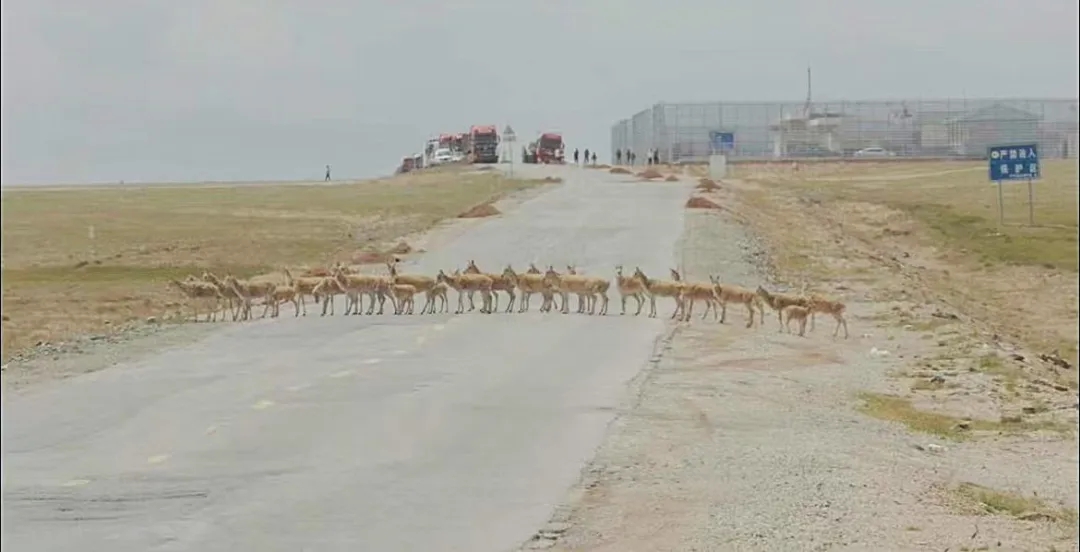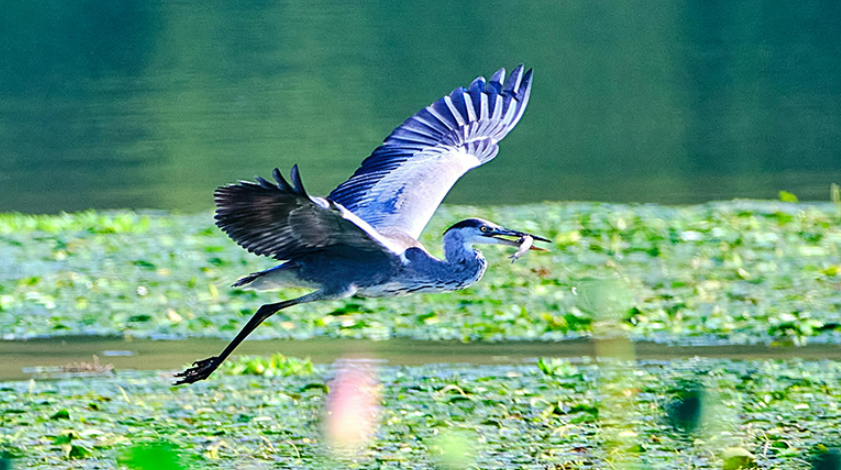Tibetan antelopes start homebound migration

Tibetan antelopes move across the Qinghai-Xizang highway at the Wudaoliang protection station in Hoh Xil, northwest China's Qinghai Province. (Photo courtesy of the Hoh Xil management office)
At 11:40 a.m. on July 29, the first flock of 45 Tibetan antelopes was spotted returning to their natural habitat after giving birth near Zonag Lake in the heart of Hoh Xil, a nature reserve in northwest China's Qinghai Province, according to staff at the Wudaoliang protection station of the Hoh Xil management office under the Sanjiangyuan National Park administration.
The herd crossed the Qinghai-Xizang Highway, marking the start of their annual homeward migration after the calving season.
To safeguard the animals during this critical period, the Hoh Xil management office has intensified patrols and monitoring in key migration zones. When antelopes gathered along the highway, staff from the Wudaoliang protection station enforced temporary traffic controls—halting vehicles and banning horn use—to reduce disturbance, while also conducting headcounts of the migrating antelopes.
This year's migration began 13 days later than last year, but the first group contained 24 more antelopes than the initial group in 2024.
The Tibetan antelope migration is considered one of the world's most breathtaking migrations of hoofed animals. Each year from May to July, female antelopes from Qinghai's Sanjiangyuan, the Altun Mountains in northwest China's Xinjiang Uygur Autonomous Region, and Changtang in southwest China's Xizang Autonomous Region travel to Zonag Lake in Hoh Xil to give birth. From late July to early August, mothers set out on the return trip with their offspring.
Under first-class state protection in China, the Tibetan antelope is a flagship species of Hoh Xil in Sanjiangyuan National Park. Thanks to consistent law enforcement and stringent conservation measures, there has been no poaching gunfire in Hoh Xil since 2009, and the population of the species has now surpassed 70,000 in the Hoh Xil section of the national park.
Photos
Related Stories
- Tibetan antelopes start annual migration in NW China's Qinghai
- Large roving herds of Tibetan antelopes demonstrate successes of local ecological protection efforts in China’s Tibet
- Man devotes life to protecting Tibetan antelopes in the wildlife paradise of Hoh Xil
- Rangers provide vital nourishment to Tibetan antelopes during bout of heavy snow, low temperatures
- Guardians of the Tibetan antelope
- Rescued Tibetan antelopes give birth to babies
- Rescued Tibetan antelopes released into the wild in Hoh Xil
Copyright © 2025 People's Daily Online. All Rights Reserved.









